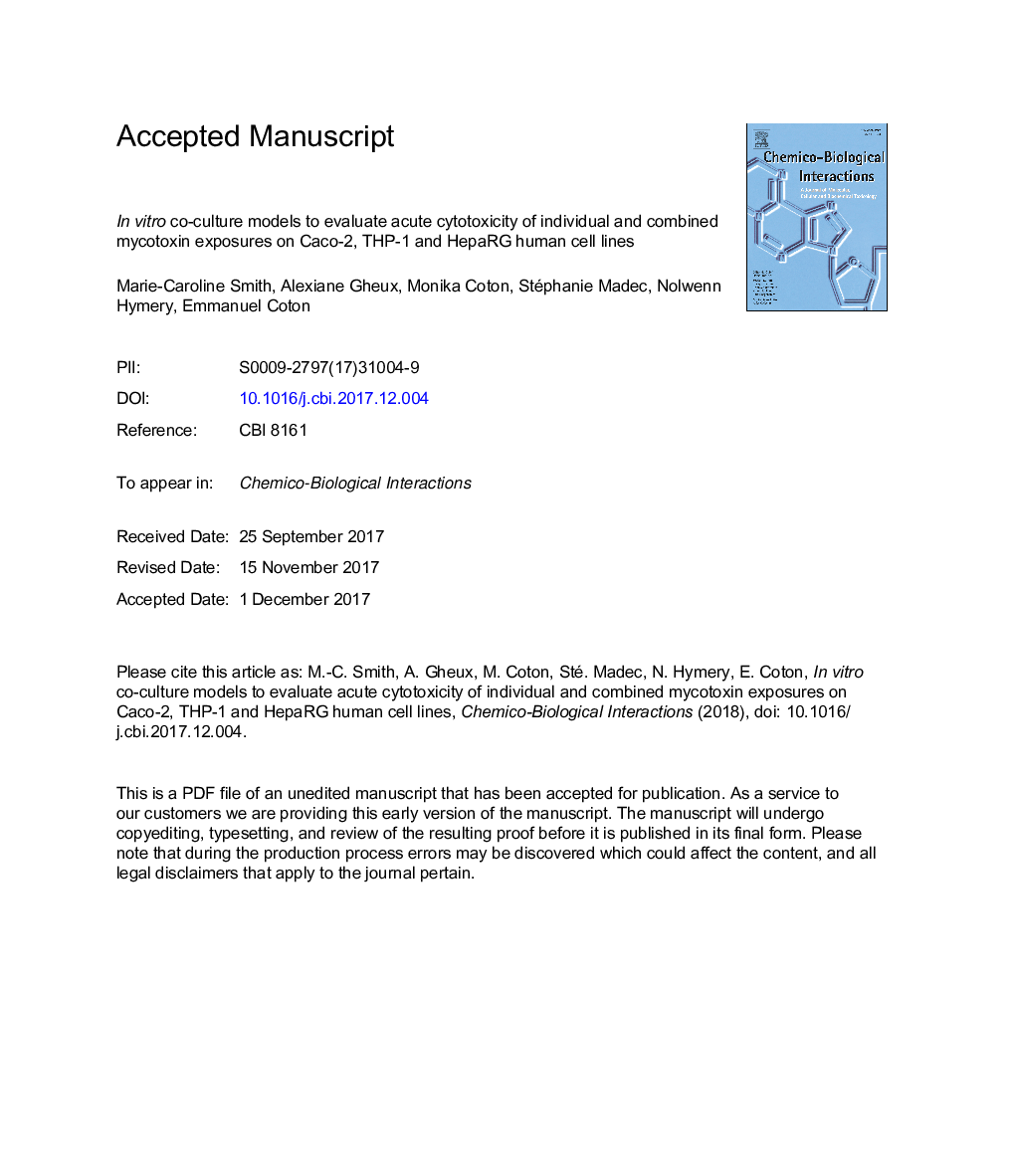| Article ID | Journal | Published Year | Pages | File Type |
|---|---|---|---|---|
| 8545088 | Chemico-Biological Interactions | 2018 | 37 Pages |
Abstract
Deoxynivalenol (DON) and zearalenone (ZEA) are mycotoxins primarily produced by Fusarium species and commonly co-occur in European grains. Some in vitro studies reported synergistic combined effects on cell viability reduction for these two natural food contaminants. However, most of these studies were carried out on conventional cell culture systems involving only one cell type and thus did not include cell-cell communication that is closer to in vivo conditions. In this context, we developed easy bi- and tri-culture systems using the Caco-2 (intestinal epithelial cells), THP-1 (monocytes) and HepaRG (hepatic cells) human cell lines in a proliferating state. Individual and combined cytotoxic effects of DON and ZEA were then assessed using co-cultures during 48Â h. In bi-culture systems, results showed that only the highest tested dose of ZEA (IC30) induced a significant reduction in THP-1 viability with both Caco-2 and HepaRG cells cultured in transwells above. On the contrary, only the highest tested dose of DON (IC30) significantly affected HepaRG cell viability located under the Caco-2Â cell monolayer. In addition, the DONÂ +Â ZEA combination seemed to induce higher cytotoxicity than each toxin alone. Mycotoxin quantification in the abluminal compartment by Q-TOF LC-MS suggested uptake of both mycotoxins by the different cell lines. According to the co-culturing cell type, possible cell-cell interactions were also observed. Finally, in the tri-culture system, no cytotoxic effects were observed, regardless of the treatment. These findings highlighted the importance of the proposed models to better decipher toxicological impacts of mycotoxins on more complex cellular systems.
Keywords
LC-MSTCTHepaRGTEERTHP-1MTSTrichothecenesZEAQ-TOF(3-(4,5-dimethylthiazol-2-yl)-5-(3-carboxymethoxyphenyl)-2-(4-sulfophenyl)-2H-tetrazolium)IC10DeoxynivalenolCaco-2IC30DMSODONDimethylsulfoxideZearalenonequadrupole time-of-flightCytotoxicityMycotoxinsCo-cultureliquid chromatography coupled to mass spectrometry
Related Topics
Life Sciences
Environmental Science
Health, Toxicology and Mutagenesis
Authors
Marie-Caroline Smith, Alexiane Gheux, Monika Coton, Stéphanie Madec, Nolwenn Hymery, Emmanuel Coton,
